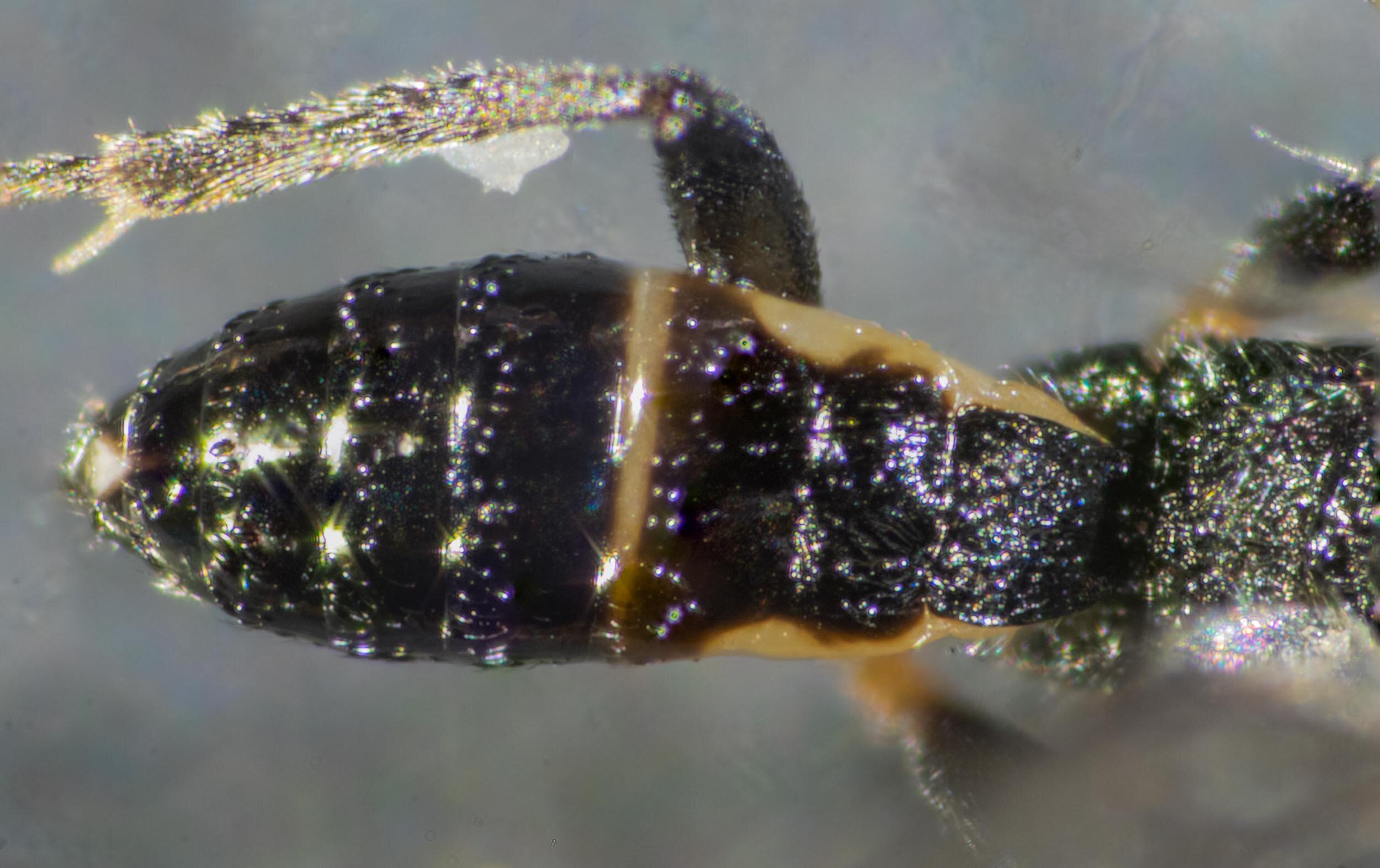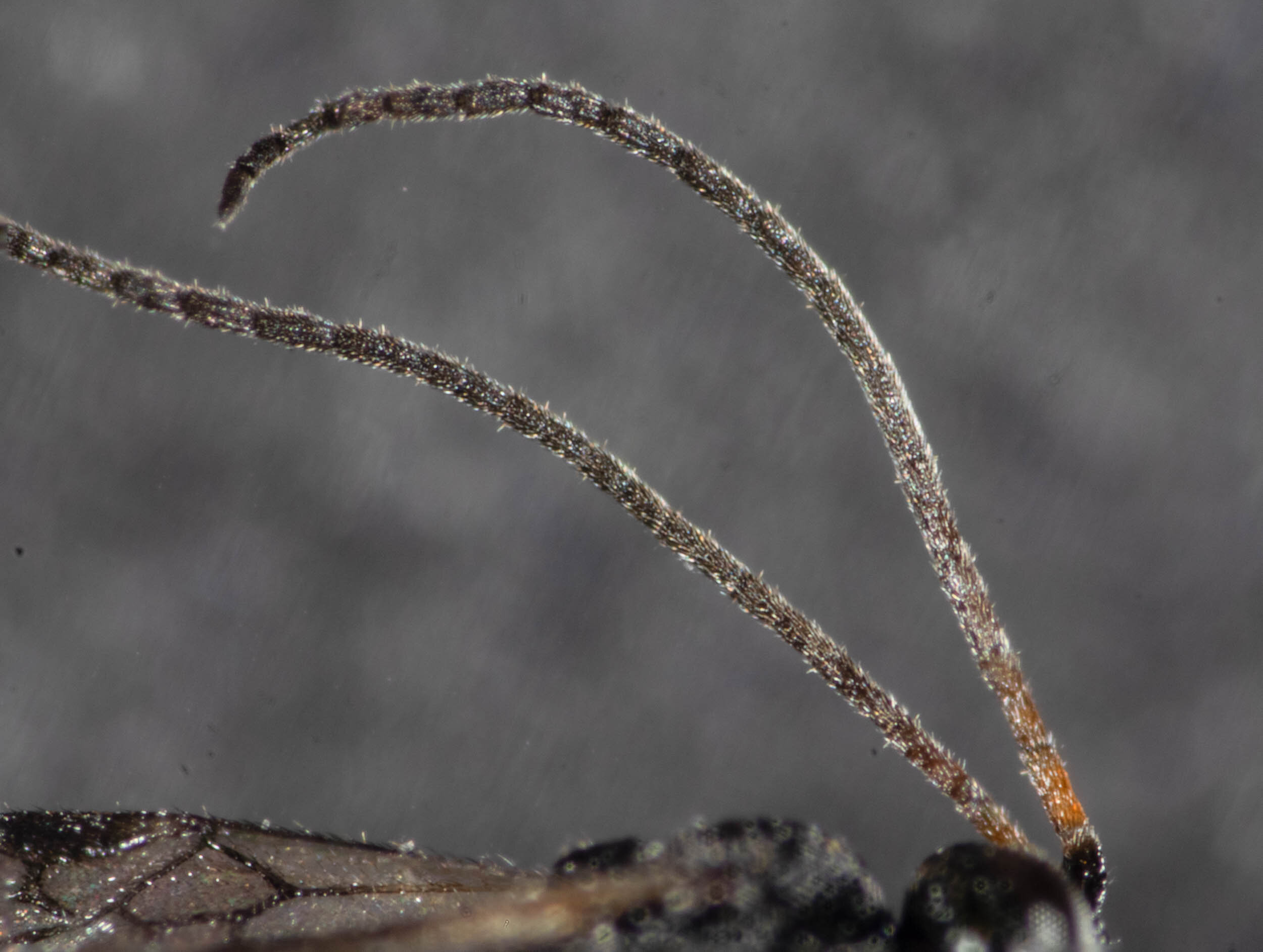New Cotesia sp.?

Workbook
Discovery of a possible new microgastrine wasp species on our Wonboyn block
25 Feb 2021
I sighted a cluster of cocoons attached to the low stem of an Austral Indigo (Indigofera australis) bush. These looked similar to the Cotesia wonboynensis cocoons. There was no sign of a caterpillar carcass beneath the cocoons but there was a furrow on the lower surface of the cluster. The stem bearing the cocoons was largely denuded.
Common (1990) Moths of Australia lists Indigofera australis as the food plant for only one moth species - Orgyia anartoides, Painted Apple Moth.
We sighted the larva of this species feeding on Indigofera australis on our block on Oct 30, 2020.
The larval size of this species would be a good match for the size of the furrow in the cluster of cocoons.
I opened one of the cocoons on the day we collected them and found a wasp pupa inside.
I placed a glass over the remaining cocoons to trap anything that might emerge from them.
2 March 2021
A large number of wasps was sighted moving around actively inside the jar early in the morning. There had been no sign of these on the previous day.
I photographed a number of these wasps through the glass jar, including some copulating pairs.
The next gallery of images shows a single wasp moving around outside the glass.
I placed the wasps in the freezer and removed them when they were moving slowly. I selected 14 of these and placed them in a vial of 100% ethanol, to be sent to Erinn for further analysis and DNA sequencing.
The rest of the wasps and the cocoons were placed in separate vials of ethanol. All vials were stored in the fridge.
Counting showed a total of ~70 wasps in the clutch. I could find few obvious males.
I selected three of the killed wasps for closer imaging of their body parts under the Tessovar.
#1 (wings removed)
#2
#3
Identity of these wasps
These wasps show the diagnostic features of Cotesia, viz. absence of forewing areolet, short inflexible hypopygium and a short ovipositor, T1 broadening towards posterior margin, T2 broad and roughly rectangular.
They appear to key out to Cotesia wonboynensis using the key in Fagan-Jeffries and Austin (2020) and virtually all body parts show a very similar morphology to that species.
However there are a few differences:
Ovipositor is shorter than that of C. wonboynesis and has a rounded, rather than pointed tip.
Femora of fore, mid and hindlegs and tibiae of midlegs are black (except at distal ends of forelegs). In C. wonboynensis these leg parts are orange (except for distal ends of femora and tibiae of hindlegs, which are black).
Antennae are not as dark as in C. wonboynensis, especially most basal flagellomeres, which are orange.
The lepidopteran host of these new Cotesia wasps is unknown. However it is unlikely to be the same as C. wonboynesis (Anthela sp., possibly A. connexa) as Indigofera australis is not a known food plant of Anthela larvae. Otherwise, one would have to assume that C. wonboynensis can use another lepidopteran species, such as Orgyia anartoides as a larval host.
Hopefully, further morphological and genomic analysis by Erinn will clarify whether the new wasps are C. wonboynensis or another, new Cotesia species.
Update - 10 Sept 2021
Erinn told me today that she has sequenced these wasps and they are definitely not C. wonboynensis or any other species she has sequenced before. She suggested that we should publish a description of this species together.
This is a workbook page … a part of our website where we record the observations and references used in making species identifications. The notes will not necessarily be complete. They are a record for our own use.







































